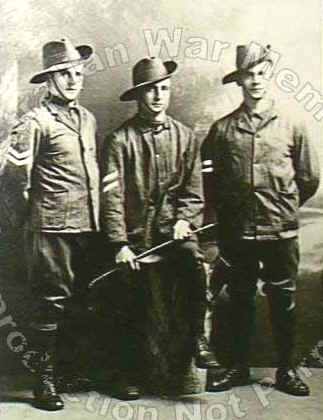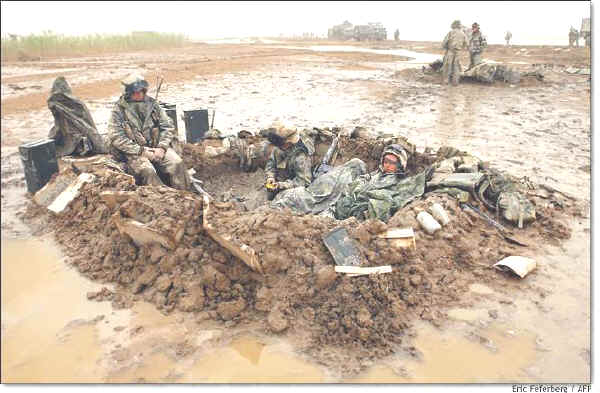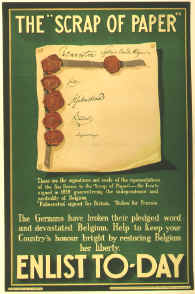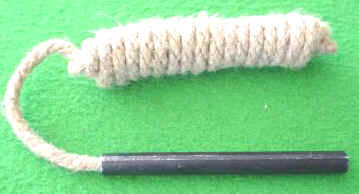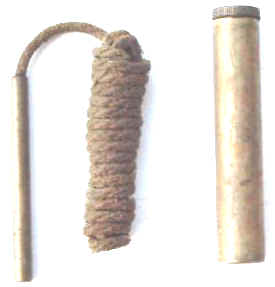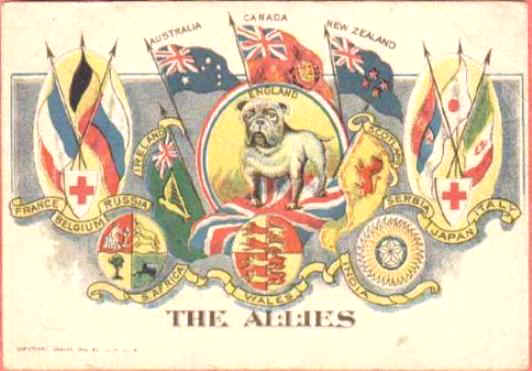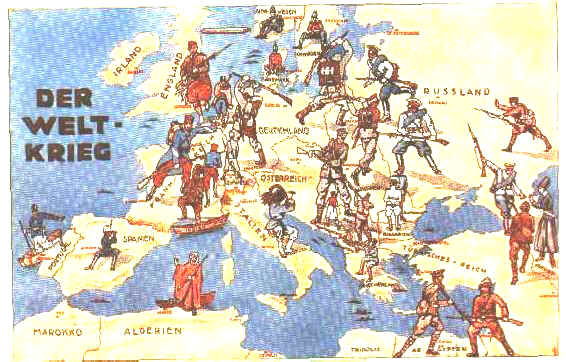 |
|
|||
|
Frequently Asked Questions, 201 to 250 |
||||||||||||||||||||||||||||||||||||||||||||||||||||||||||||||||||||||||||||||||||||||||||||||||||||||||||||||||||||||||||||||||||||||||||||||||||||||||||||||||||||||||||||||||||||||||||||||||||||||||||||||||||||||||||||||||||||||||||||||||||||||||||||
Frequently asked questions 201 to 250
What is the difference between Exercise and Operation? An Exercise is a training program. An
Operation is the real thing in a war zone.
What was a "bomber"? Hand held bombs were called grenades. They were not on issue to every soldier until later in WW1. The soldiers who trained to use them were called 'grenadiers' until the Grenadier Guards complained that that usage would reflect badly on them and their name. So King George V "requested" a change and the grenades became 'bombs' and the soldiers that used them were referred to as 'bombers'. Undoubtedly the greatest grenade
battle of the war occurred on the Pozieres Heights on the night of 26-27
July 1916. Lasting for twelve-and-a-half hours without a break the
Australians, with British support, exchanged grenades with their German
foes (who threw multiple types of grenade: sticks, cricket balls, egg
bombs and rifle grenades). The allied contingent alone threw some 15,000
Mills bombs during the night. Many
grenadiers were killed that night, while many others simply fell down
due to complete exhaustion. Which is correct; Vietnam or Viet Nam? Either. Both. The Vietnamese tend to
break their words up so they would tend to say (and spell )Viet Nam or Ba Ria,
Sai Gon where
we tend to run words together (howyagoinmateorite?) so we tend to use
Vietnam or Baria or Saigon. You say potato I say ...... Explain "bought his commission" This never happened in the Australian Army. It was common in the British Army (pre WW1) for commissions to be bought and sold. A rich man could advance very quickly, with almost no training or experience, to high command by buying his way up. It was legal and common. There was no retirement benefits or pensions for retired officers so poor men who had earned their ranks could sell them to rich men, openly and above board. James Thomas Brudenell, 7th Earl of Cardigan (Lord Cardigan) ( 1797/1868) had a private annual income of 40,000 pounds. That was about what a Digger in WW1 would earn in 366 years. Cardigan bought his way to the near top. He lavished money on his troops equipment and uniforms. They were very pretty. They were also brave. So was he, or stupid. He led the Charge of the Light Brigade after completely missing the point of his orders: he got to the guns, bravely; and left before his troops, stupidly. The bloke who did not stop him from mistaking his orders was his brother in law, who disliked him, and who had purchased his own commission. Officers who lacked money could make their way by seniority, for vacancies which arose when an officer was killed were filled by the promotion of the next senior, often creating vacancies further down the regimental list. Interest – the support of an influential politician or senior officer – was also important, especially for young men who sought to make their way as gentleman volunteers, serving as private soldiers but messing with the officers and hoping to gain a free commission. Captain Thomas Brotherton, who served with the 16th Light Dragoons in the Peninsular War, recalled that these volunteers: ‘...always recklessly exposed themselves in order to make themselves conspicuous, as their object was to get commissions given to them without purchase. The largest proportion of these volunteers were killed, but those who escaped were well rewarded for their adventurous spirit.’ During major wars there were far more vacancies than young men wishing to buy commissions, and most officers commissioned during the Napoleonic Wars gained their rank without purchase. Over the past twenty years a growing volume of research has testified to the importance of this group of officers. Some of them enjoyed remarkable careers. Robert Cureton was commissioned into the militia in 1806 but ran into financial difficulties and faked his suicide. He enlisted into the Regular army under an assumed name, was commissioned from the ranks, and rose to the rank of brigadier general before he was killed by the Sikhs in 1849.
Is overwhelming fire power a good thing? No, not always. Viet Nam, 1970. 8 RAR
are in the Long Hai hills, a notorious NVA/VC hidey hole. They were
making good progress. 34 members of D445 have been killed. All of
D445 are in the area. Normal Australian procedure is close with the
enemy and engage him. Beat him where he is. Not to be. 8RAR are pulled
back 3,000 meters and all the local hamlet leaders are advised that a
B52 strike is about to happen. Guess what. By the time (24 hours later)
that all the
paper-work and red tape had been attended to D445 were long gone.
Instead of being bottled up and mauled they were allowed to slip away in
the name of "concentrating massive firepower" Who took part in the Viet Nam war?
But
only seven countries, Australia, New Zealand, South Korea, Thailand, The
Philippines, The Republic of China (Taiwan) and Spain, sent men. The
biggest contingent was the Koreans, who numbered 48,000 in 1967. But they
did not come cheap. America had to
agree to modernize the Korean armed forces and grant Korea several
lucrative military contracts, making the ARVN's uniforms, for example. (Australia
and New Zealand paid for everything that their own troops used or that was used in
their support). The
now disgraced President Marcos of the Philippines sent 2000 troops in
1966. In return, the Americans turned a blind eye as he turned his
country into a virtual dictatorship. If
South Vietnam fell, nearby Thailand would almost certainly be threatened
by the spread of communism in the area. As well as sending 11,568
troops, the Thais allowed B52s, Phantoms and reconnaissance aircraft ,
along with the Infiltration Surveillance Centre, on their soil. The
Republic of China (Taiwan) which, like Korea, had its own beef against communism
and its own reasons for keeping in with the US, sent
31 men. Franco's
Fascist Spain sent a
13-man medical team. And there are rumours that
members of the British SAS had some covert involvement in Vietnam. The
peak Australian strength was 7,672 and New Zealand's 552. Both
governments felt they had good reason to fight. They had seen communist
insurgency in Malaya and were convinced that it would spread further
south if Vietnam fell. Did the Armalite rifle have a tumbling bullet when it was released? No. Never. This was
a piece of nonsense dreamed up by our friends in the media who got half
a story and then embellished
it. The reports said that a tumbling bullet caused "massive
damage". Some even suggested it was as bad as using dum dum
bullets. No bullet that tumbles could ever be aimed accurately. The fact
is this. The 5.56mm round used by the Colt AR15 Armalite (M16) is high
velocity. Because it strikes it's target at supersonic speed it does do
more damage that the same sized round at a lower muzzle velocity. Were
it not for this increase in "stopping power" NATO and the US
would have stayed with the 7.62mm round then, and now, in common use
throughout the world. If I had to be shot I would rather be hit by a
5.56mm than a 7.62mm. Why was the Red Baron's Unit called a Flying Circus? In
order to be close to the front, and as mobile as possible to avoid Allied
bombing, Jasta 11 (men and planes) were quartered in tents, giving rise to
a nickname for the squadron: “the Flying Circus.” Why are NCO stripes called "chevrons"? "Chevron" is an architectural
term denoting the rafters of a roof meeting an angle at the upper apex.
The chevron in heraldry was employed as a badge of honour to mark the main
supporters of the head of the clan or "top of the house" and it
came to be used in various forms as an emblem of rank for knights and
men-at-arms in feudal days. One legend is that the chevron was awarded to
a knight to show he had taken part in capturing a castle, town, or other
building, of which the chevron resembled the roofs. It is believed from
this resulted its use as an insignia of grade by the military. This term gained currency during the
invasion scare of 1942. It was the line of defence against an invading
Japanese force. When Queenslanders discovered that, for sound military
reasons it was in fact south of Brisbane, along the Lamington mountain
range which forms the Queensland-New South Wales border, their enthusiasms
declined sharply. What was the "Battle of Brisbane"? It was a fight between American MP's and
Aussie diggers. The MPs opened fire and killed 1 Aussie and wounded a
couple of others. Australian Military Regulations and
Orders. The book that lays down the how and when of nearly everything the
Army does. Central Army Records Office. The big
filing cabinet that gobbles up every piece of paper the Army ever produces (and then loses it) How many National Servicemen went to Viet Nam?
Were any men conscripted in WW1? Yes. Although conscription was defeated at the referenda the Government was so convinced that they would be successful they actually proceeded with the initial call ups.
What is Australia's rarest medal? It is a toss up between the Military
Medal (MM) with 3 bars awarded to Pte Corey in WW1 or the Albert Medal in
Gold awarded to Sgt Coyne in WW1. Both are unique as the only one of their
type ever awarded to an Aussie. The MM and 3 bars probably wins out
because it is the only combination of that sort ever awarded to anyone. What is the world's rarest medal? Only one of the NAZI Knight's
Cross with Gold Oak Leaves, Swords and Diamonds was ever awarded and it
was always envisaged that only 12 would ever be struck. That would make it
the rarest. What details can I get on the web about a WW2 service-person relative? What is it like to be in the Infantry? Dig a hole in your back garden
while it is raining. Sit in the hole while the water climbs up round your
ankles. Pour cold mud down your shirt collar. Sit there for forty-eight
hours, and, so there is no danger of your dozing off, imagine that a guy
is sneaking round waiting for a chance to club you on the head, cut your
throat or set your
house on fire. Get out of the hole, fill a suitcase full of rocks, pick it
up, put a shotgun in your other hand, and walk down the muddiest road you
can find. Fall flat on your face every few minutes, as you imagine big
meteors streaking down to sock you ... Snoop around until you find a bull.
Try to figure a way to sneak around him without letting him see you. When
he does see you, run like hell all the way back to your hole in the back
yard, drop the suitcase and shotgun, and get in. If you repeat this
performance every three days for several months you may begin to
understand why an infantryman gets out of breath.
Were all Japanese POW Camps equally bad? No. Many forget that a large number of
Canadians were held as prisoners of war in the Pacific. The biggest blow
to Canadian troops in that region came on Christmas Day, 1941, when Hong
Kong fell. On that one day 1,689 Canadians were captured by the Japanese.
It's thought that 1,405 survived the camps in Hong Kong and Japan. What happened to the horses from the Light Horse?
The horses were categorised by
veterinary officers by age and condition, into A B C & D. Those of no
further use and those over 14 years of age were destroyed (although Bourne
records in 2nd LH History that those over 8 years of age were destroyed,
this is contradicted by the regimental war diary) Some smaller horses were
sold locally or in some cases given away (100 horses were presented to the
King of the Hejaz) How many horses were sent overseas for the Light Horse?
Why is there a crack when a rifle bullet goes past? The cordite rounds used in the First
World War tend to be slower than nitrocellulose or current propellant
rounds. This means that, after travelling a short distance, say 400m, they
are sub-sonic and did not give the wicked ‘crack’ (sonic barrier
shockwave) of modern ammunition projectiles. Which battalions were disbanded in France in 1918?
What is the difference between a bar and a clasp on a medal?
This is a nickname given to the rank (in the US Army) of full colonel as opposed to Lieutenant Colonel. It is so called because of the rank insignia worn. See photos
What is the superstition about 3 lights off 1 match being bad luck? There is a superstition in the Army about lighting 3 cigarettes from one match (or from one burning of a cigarette lighter). That started in WW1 where the theory was that enemy snipers were drawn, at night time, to the flash of light of striking a match and lighting of the first cigarette, lighting the second cigarette allowed the sniper to get set and if a third was lit it gave time for the sniper to aim and to shoot. Many people (myself included) will still
not light 3 cigarettes from 1 match or 1 burn of a lighter, even though
the risk of being sniped by a German marksman has reduced considerably
since 1918. It is still considered "bad luck" to do so. Are the Corps of the Army still "Arms" and "Services"? No. The Corps of the Army are no longer
categorised as fighting arms and service corps. I'm not sure
when this terminology went out of date, but know that for certain it was
prior to 1995 In 1995, it was being taught that the Corps of the Army were
all classified as either combat, combat support or service support corps.
Of these, only RAINF and RAAC were classified as combat corps, as closing
with and engaging the enemy was the key component of their corps role.
Under this classification, RASigs was grouped along with RAA, AAVN, ENGRs
and AAMC as the combat support corps as while their role was not to seek
out and engage the enemy, it was common for them to be called upon to
carry out their corps responsibilities while in contact with the enemy.
All the others such as RAEME, RAAOC, RACT etc were grouped as the service
support corps. Current doctrine on the subject is
covered in Land Warfare Doctrine 1 - The Fundamentals of Land Warfare
dated 01 Jan 02. Chap 4 of this reference covers the combined arms
team (CAT) and refers to categorisation based on battlespace operating
systems (BOS) rather than corps. This reflects a greater emphasis on
battlefield effects and capabilities of units and sub-units rather than
the corps to which they belong. Under LWD1, the corps are not
categorised like they have been previously, rather they are tasked to
contribute to the various BOS as part of an effective combined arms team.
In the case of RASigs, we are primarily concerned with the Command and
Control BOS, but also contribute to the Information Operations and
Intelligence, Surveillance and Reconnaissance BOS'. So in summary, under current doctrine
there is no categorisation of Army Corps into combat or fighting arms.
Therefore, it is not correct to state that RASigs is either.
However, when such categorisation systems were in place under The Arms and
Services MLW, RASigs was classified as a Combat Support corps.
Infantry and Armour were the only combat arms, at least between 1995 and
2000. (by a serving Officer 2003) Is "Swy" the same as "Two-up"? No. Two up is played with 2 pennies
(coins). Swy is played with 3. This means that there is always a result.
It is sometimes called "sudden death two up". Details at Two Up (Swy) the Digger's gambling game.
What is/was "The Scrap of Paper"? There are 2 "scraps of paper", one from each of the World Wars. Before WW2 the then British Prime
Minister Neville Chamberlain in a last ditch effort to appease Hitler
signed with him an agreement that supposedly guaranteed "peace in our
time". Chamberlain made big political noise about it. Hitler referred
to it, disparagingly, as "a scrap of paper that he gave to Chamberlain because he
seemed like a nice little man". A pull through is a piece of equipment necessary
for the correct maintenance of a rifle. It is a weight connected to a
strong cord with a loop at the end of the cord. The weight is dropped down
the barrel of the rifle from the breech end. A piece of oiled cloth (fourby) is inserted in
the loop and pulled through the rifle several times to clean and oil the barrel.
Forby is a slang term to describe the
felt cloth used to clean and oil a rifle. It is used in conjunction with a
pull through (see above). It is so called because it was 4 inches wide and
one could tear off what ever length was required. The resulting piece as
therefore 4 by ??? (fourby) The Lend-lease Act of March 11, 1941 permitted the President of the United States to "sell, transfer title to, exchange, lease, lend, or otherwise dispose of, to any such government [whose defense the President deems vital to the defense of the United States] any defense article". It thus extended Cash and Carry and obliterated any sense of neutrality. The value of the items to be lent were not to exceed $1,300,000,000 in total. US President Franklin Delano Roosevelt approved US$1 billion in Lend-lease aid to the Soviet Union on October 30, 1941. The act is generally known as lend-lease in the US but lease-lend in the UK. In fact neither term appears in the true title of the act, which is "Further to promote the defense of the United States, and for other purposes."
Lend-lease was a critical factor in the eventual success of the Allies in World War II, particularly in the early years when the United States was not directly involved and the entire burden of the fighting fell on other nations, notably those of the British Commonwealth. Although Pearl Harbor brought the US into the war in December 1941, the task of recruiting, training, and equipping US forces, and then transporting them to the war zones could not be completed overnight: through 1942, and to a lesser extent 1943, the other Allies continued to be responsible for most of the fighting, and the supply of military equipment under lend-lease was a major part of their success. Even after the United States forces in
Europe and the Pacific began to reach full-strength in 1943-1944,
lend-lease continued. Most remaining belligerents were largely
self-sufficient in front-line equipment (such as tanks, escort aircraft
carriers and fighter aircraft) by this stage, but lend-lease provided a
useful supplement in this category even so, and lend-lease logistical
supplies (including trucks, jeeps, landing craft, and above all the
Douglas DC-3 transport aircraft) were of enormous assistance. What is the military meaning of "Cash & Carry"? Originally, cash and carry simply designates a method of making purchases where the customer pays the purchased goods immediately and takes them away himself -- as opposed to having the goods delivered and paying a bill later. In that sense, most retail shops are "cash and carry". Cash and carry also has more specific meanings in certain fields:
Pam is the nickname for a Training
Pamphlet as used by Army to ensure a standard level of training for Drill,
Weapons handling and various other matters that EVERY soldier needs to be
taught. IA is the "Immediate Action"
that a soldier is trained to take when his weapon fails to operate. The
most common reason for weapon stoppage is lack of ammunition. The
"First IA"
addresses that. If the weapon still fails to operate another, the
"Second IA" takes
further steps to remedy the situation. These are drilled into every
soldier endlessly so that in the heat of battle he responds
instinctively. What is the goose-step or goose-stepping? It is a form of marching. Surprisingly it is favoured most often in hard left or hard right totalitarian regimes. The British, Australian, US style of march is a form of controlled and regimented walking. The knees bend, the arms swing to a natural degree and the head is held erect but not stiff. The soldier stays upright but not stiff. On the other hand goose stepping involves locking the head position a little higher than natural, the legs are kept stiff with no bend in the knees at all, the back is kept artificially stiffened and the arms are swung artificially high to shoulder level or kept motionless by the side. The German Army used to goose step with the left arm motionless and the right arm raised in the "Hitler" salute. The NAZI regime is the best known of the goose steppers but the USSR and North Korea are another 2 countries that have or do favour it. Some dictionaries describe it as a symbolic stomping of the enemy. Norman Davies, author of Europe: A History, traces the origins of the march back to the Prussian army in the 17th century. The body language of goose-stepping, he wrote,
After WWII, the goose-step was outlawed in West Germany, making it the only human gesture to be officially banned by a state.
Japan knew from the beginning that she could not beat the USA and that only a slim chance of NAZI Germany beating the British Commonwealth and then turning on USA existed. Japan hoped to force the USA to the negotiating table with 1 massive strike and success elsewhere. As we know all they did was to get the Yanks cranky. (Osama, Saddam etc will you never learn?) Japan planned a "Sphere of Living" for the "Greater East Asia New Order". The countries and territories to be invaded and made part of this grand plan were:
Why were the Anzacs landed at the wrong place? While it is both well known and
true that the original landings at what we now call Anzac Cove were over a
mile north of where they were supposed to be nobody
knows for sure how or why it happened. The most common theory is that a
strong current pushed the boats north. Remember that the landing boats
were under the control of Royal Navy Midshipmen as young as 14. However
that theory may well be incorrect. How many Anzacs were executed in WW1? Five (5), all New Zealanders. Australia had 170 men convicted of offences that could lead to execution but as they were all volunteers the Governor-General refused to sign the orders. 1 Aussie was convicted of murder of a British civilian, in a civil court and executed.
Military Executions First World War:
How big was the ANZAC area at Gallipoli? It varied over the time they were there
but about 400 acres is acceptable as a generalisation. That is about the
total area of 2,000 houses in a modern housing estate. The suburb I live
in has over 4,000 houses. It is Aussie slang for an elastic band used to hold the bottom of the trouser leg tightly bloused over the top of the boot. When I joined the army in 1965 they were technically illegal, frowned upon in some units and allowed in others. (Of course the Officers who thought it was "character building" for a Digger to have to keep his trousers ballooned properly by just poking the bottom of the trouser legs into the top of a pair of gaiters didn't have to wear them. They wore slacks.) As the years have gone by the "brass" have relented and now "lackie (or lacky) bands are in full use.
Does the Australian Army have a war cry? "Imshee" is the Arabic
for go away." The Australasian Corps, which had so far employed it
only to street hawkers in Cairo, used this war cry on April 25, 1915.
Other than that I don't know of any that were used on a regular basis. Was Gallipoli fairly blamed on Winston Churchill? In my opinion, NO. Winston Churchill has been vilified over the years by some (not all) people with a small understanding of the real situation. Here are the facts. Churchill was the original architect of the "Mediterranean Campaign" and remained it's staunch supporter even after it went wrong. His vision was for a NAVAL action to force the Dardanelles. He did not originally suggest an armed landing at Gallipoli or anywhere else. He was First Lord of the Admiralty. He saw it as a campaign that the Royal Navy could handle. Churchill had no say in the appointment of Kitchener, who appointed Hamilton, who stuffed up the whole campaign from the word go and who appointed men who were not capable of doing the job. Men like Stopford ( who was quite old and in his first ever command of troops at war) and Hunter-Weston who was a butcher of Divisions equaled only (later) by Haig. The Dardanelles Campaign might not have
started without Churchill but there is no evidence to suggest that he had
any hand in it's flawed execution. I've heard the Anzacs went ashore at Anzac Cove without ammunition. True or false? Totally false. Each man carried 200
rounds. In the normal Army tradition the rifles were not loaded while the
landing was taking place and the troops had been told not to indulge in
rifle fire until dawn. Both of those practices make sense. The first
prevents accidental discharge while clambering over the side of a boat
into a pinnace and the second because firing blind at night time reveals
your position without damaging the enemy. Keep in mind that it was planned
as a "surprise attack". What did the troops carry when they landed at Anzac Cove ? The men were heavily loaded. Each had 200 rounds of
.303 ammunition, rifle and bayonet, an entrenching tool with two empty sandbags wrapped around it, a heavy backpack and
two white bags containing two days' extra rations, which included can of bully beef, biscuits, tea and sugar. The rifles were
unloaded. There was to be no shooting before daybreak. Warfare had been turned back a couple of centuries. Before the sun was up the
enemy could die only from stab wounds. I have heard that Aussies elect their Officers. Is that true? No. Australian military Officers have to
go through a long and involved training program equal to any in the world.
However before Australia became a nation some of the Colonies had
volunteer units. They were unpaid, got almost no Government support and in
a lot of cases supplied their own horse, rifle and time and paid for their
own uniforms. Those Units often elected their Officers.
Could you please tell me the meaning of "Cadre". In it's most common usage
it refers to a (usually small) group of trained men sent to or posted to a
unit where the current training level is not high. For example all
through the 1950s, 60 and 70s all Citizens Military Forces (CMF) units had
an Australian Regular Army (ARA) cadre. They acted as advisors and worked
WITH the CMF but not as part of the unit. More or less overseers. In
other situations the Cadre would be the full time trainers as other troops
came and went from the training establishment. In that case the word cadre
could probably be replaced with "staff" but the Army don't talk
English, they talk Army.
Braces
are an old fashioned way of keeping your trousers up. (See
photo). The single strap attached to
the inside back of the trousers. The straps went over the shoulders and
attached to the inside left and right hand side. They were worn over the
shirt and under the jacket. They were issued in WW1 and were still on
issue when I was in the Army in the mid 1960s. Our RSM had a habit of
doing a dress inspection just before leave. Anyone not wearing braces had
his leave cancelled.
Copyright © 2003 Ted Harris. All rights
reserved as per Legal page. |
||||||||||||||||||||||||||||||||||||||||||||||||||||||||||||||||||||||||||||||||||||||||||||||||||||||||||||||||||||||||||||||||||||||||||||||||||||||||||||||||||||||||||||||||||||||||||||||||||||||||||||||||||||||||||||||||||||||||||||||||||||||||||||
